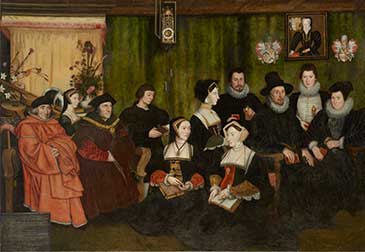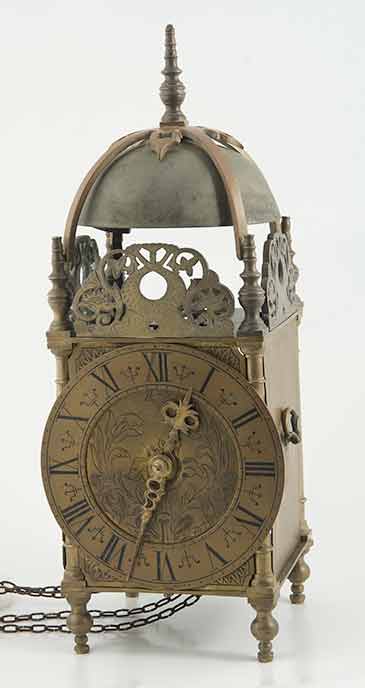A collaboration between the National Portrait Gallery, its regional partner the National Trust, and the University of Bristol, Pictured and Seen: Objects in Portraits brings together painted portraits with objects such as timepieces, books, instruments and glassware. All three institutions are lending to the display which will be the first occasion Montacute House has combined the Gallery’s portraits with objects from the National Trust’s Collections.
Highlights include the pairing of the National Portrait Gallery’s large group portrait of Sir Thomas More and his family with a later example of the lantern clock featured in the painting from the National Trust’s Collections; a set of apothecary scales with a portrait of the statesman and poet Sir Thomas Chaloner in which scales are used as a symbol for the weighing of morals; and a seventeenth-century glass bottle with a portrait of Elizabeth Urrey, whose family had connections to the glass-making industry.
The display explores the idea that portraiture is rarely simply the recording of a person’s facial features. Objects and attributes were often included in portraits to refer to an individual’s characteristics or interests. Some items were specially chosen to allude to a sitter’s profession, family connections, religious piety or political aspiration, while others were included as part of fashionable portrait formulas.
This is the third curatorial collaboration between MA students from the University of Bristol and the National Portrait Gallery after the success of the previous displays, Imagined Lives: Mystery Portraits 1520-1640 in 2010 and On the Nature of Women in 2008.
A special option on the University of Bristol’s MA course in History of Art offered students a unique opportunity to work with the National Trust and National Portrait Gallery on the interpretation accompanying the display and the chance to share their research with a wider audience.
The project has provided them with valuable experience in conducting original research at the Gallery’s Heinz Archive & Library, and in all the processes of staging a Gallery display, which involves the writing of text and captions.
Pictured and Seen: Objects in Portraits will run until November 2015.
The National Trust at Montacute House and the National Portrait Gallery, London, have been in partnership since 1975, offering visitors a chance to see over 50 remarkable Tudor and Jacobean portraits in an original setting.
Dr Tarnya Cooper, Chief Curator of the National Portrait Gallery, London, says: 'We are delighted that the creative partnership between the National Portrait Gallery, the National Trust and the University of Bristol has continued to flourish, and which this year – for the first time – has led to a collaborative display that draws on the collections of all three institutions. Pictured and Seen: Objects in Portraits provides an intriguing opportunity to look at portraits and compare depicted objects with surviving historic examples.’
Dr Alexandra Hoare, Lecturer in the Department of History of Art, University of Bristol, says: 'This has been an extraordinary addition to the MA experience for our art history students – the opportunity to learn from art objects at first hand, and to work with museum curators and conservators, has been especially fruitful.'
Barbara Wood, National Trust Curator, South Somerset, says: ‘Drawing on collections from several houses, combining portraiture and objects, has produced a stunning temporary display.’
Sonja Power, House and Collections Manager at Montacute House, says: ‘We are very proud at Montacute to be enabling the Trust to collaborate with other institutions in this way, and to be involved in training the historians of the future.'

